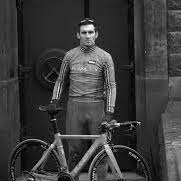Set a realistic goal
After deciding which race you wish to key in on, start to build the framework around that race. Give yourself enough time to prepare properly and calmly. Use the other races along the way to judge or improve form. Let the training and racing decide what your realistic goals should be. Don’t get too obsessed with specific numbers, paces and time splits; it’s more likely than not things will change along the way. Let the body decide what you are realistically capable of doing, not what you think the body should achieve.
- Iron-distance triathlons: the best European Irons for beginners
- Dave Scott on how goal-setting can help you focus when going long
Give yourself enough time
You wouldn’t believe the number of athletes that come to me a few weeks before their ‘A’ race and ask for my help. My common response is ‘Well, there’s not too much we can do with the race this close’. The most important thing you can do before any training has commenced is draft your season out with care, precision and wriggle room, ultimately making the big event the climax to all your hard work.
Be flexible
Many triathletes have ‘Type A’ personalities, which is great until they need to compromise. I was obsessed with keeping everything on track in my training and sticking to my race programme no matter what. In hindsight, that was a mistake. Things happen that are sometimes out of our control. Although I agree with having an overall plan, it’s okay to adjust and tweak. I used to think I was becoming soft if I couldn’t complete a certain workout on a specific day, even if my body was screaming for me to rest. You’re not being soft if you adapt; you’re being smart!
The disclaimer
Before you commence your journey to racing long, you should probably forewarn family members, wives/husbands, partners, work colleagues and pretty much anybody that you come into contact with on a regular basis, that you may not always be the happiest, most energetic person in the room when you’re not training. Just keep in mind that if you’re having one of those days, just take a moment to gather your thoughts and evaluate if the crankiness is training-induced or not.
Getting it done
As the volume starts to creep up, a lot of the sessions will be about just ‘getting it done’! Many times during my training I started the day very flat and tired, but as the session progressed the body slowly came around, and felt reasonably good by the end. There’s a fine line between fatigue and exhaustion during Ironman training and it’s not always easy to distinguish between the two. Be prepared to finish most sessions with a feeling of satisfaction rather than euphoria.
Have patience
‘Rome wasn’t built in a day’ is an adage attesting to the need for time to create great things. This really does sum up long-distance training and racing in a nutshell. Let the body slowly adapt to the training and be prepared for the ups and downs it throws at you, both physically and mentally. Remember, if it was easy, everybody would be doing it!
Avoid the grey area
Having one great training day only to then find you have put yourself in a massive hole for several days after, isn’t the way to go. You don’t need to test yourself every time you go out training. Make sure that you have the right balance of hard/key days with recovery. The common mistake with many athletes is to train in the so-called grey area of Zone 2 (not super-hard, but not easy enough to recover. By training in this manner, when it’s time to go hard or be very specific for key sessions, you’ll be simply too fatigued to get the job done.
The swim will suffer
It may seem strange, but with the increase in bike and run mileage my swim always seemed to suffer the most. Intervals I held prior to commencing my long-distance training suddenly became almost impossible for me to hold. I didn’t panic though. I just kept plugging away and adjusted the interval/intensity, BUT kept the frequency. What I found was, when I beganto rest, the body soon bounced back and the intervals were once again achievable. The
moral here is my swim suffered – for you it might be the bike or run – but whichever one it is, do not panic. Let the body adapt before making any major changes to your training cycle, especially at the beginning.
Eat well, recover, sleep
This means taking rest days, along with eating and drinking correctly to provide the body with the best chance of adaptation. The body’s stores need to be replenished, so once a session is over it’s all about getting fuelled and ready for the next one. A good example of a recovery trick that helped me tremendously was the ice bath. After my longer runs I always treated myself to a refreshing ice bath for 15-20mins. It seemed to rejuvenate tired legs and get me ready for another day. In all honesty, though, nothing can beat sleep. If you have the luxury of being able to increase the amount of sleep available to you – take it! The body will thank you for it, I promise.
Remember why
Make sure you enjoy the journey. Racing long is a significant commitment, and the balancing act that the training and racing demands should not overshadow the fact that you’re doing something you love and are extremely passionate about.
